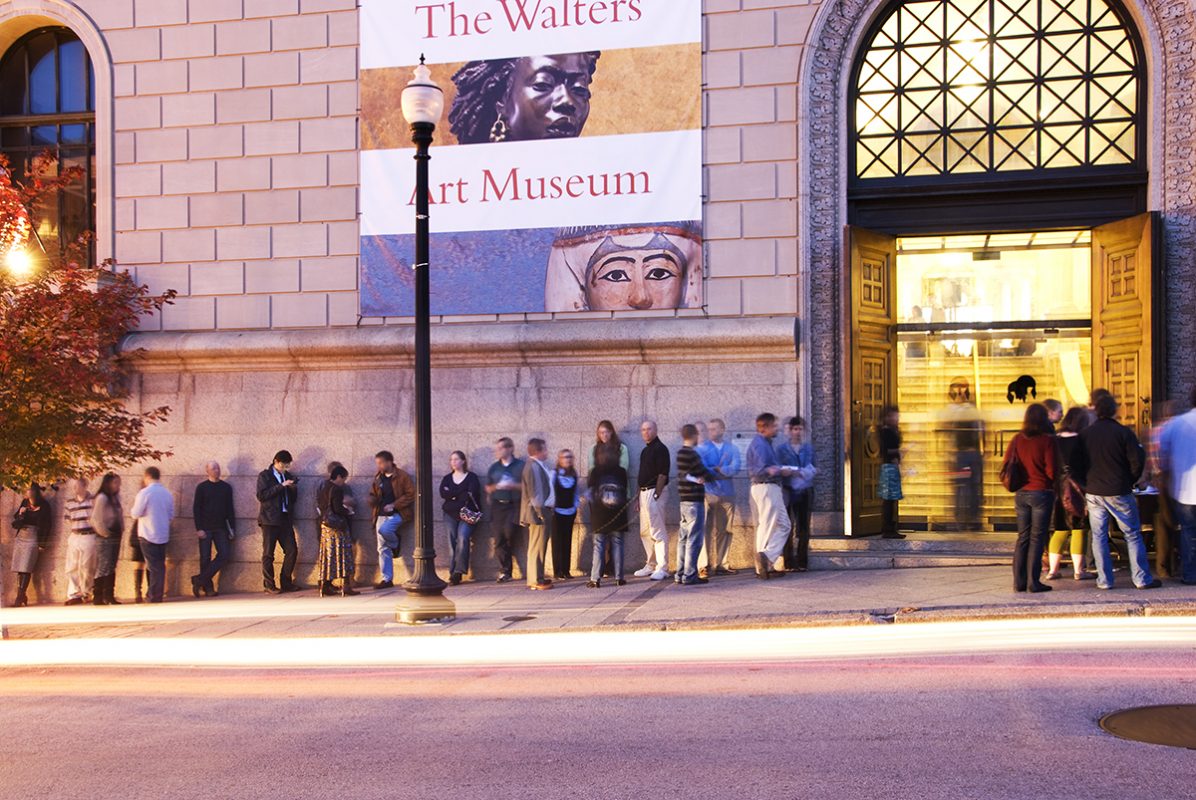
Last night I attended my first Ignite Baltimore event at The Walters Art Museum. For those not familiar with Ignite, it’s a global event series where speakers give five minute presentations—accompanied by their own PowerPoint slides that automatically change every 15 seconds—on any subject they choose. Ignite originated in Seattle in 2006 and now has 35 chapters around the entire globe. Baltimore’s chapter started in October 2008 and last night marked their fifth event.
At their first event, held at The Windup Space, about 180 people attended. Last night, more than 400 people packed themselves into the Walters. Up until last night, Ignite Baltimore was free of charge. However, the organizers began charging attendees $5, which goes to the newly established Ignition Grant (more on that later). The low admission price is great for a whole night’s worth of conversation, entertainment, and intellectually stimulating presentations.
For the first hour, guests mingled in the Walters lobby and munched on free food from Puffs & Pastries in Hampden. The food was great—stuff like pulled pork sandwiches, chicken salad on croissants, avocado salad, and vegetable tarts. Drinks weren’t free, but were reasonable. Not a bad deal for the minimal admission.
Around 7 p.m., organizers ushered people into the Graham Auditorium where the first wave of speakers gave their presentations. Co-founder Patti Chan introduced the event, giving a little bit of history about Ignite, and announcing the birth of co-founder Mike Subelsky‘s son that past Saturday. She even took a cell phone video of the entire audience wishing the baby boy a happy birthday. The whole thing was very tech-geared—people were encouraged to tweet during the presentations.
The first wave of presentations was a mixed bag. Topics ranged from the complexities of being biracial to the importance of recess in city schools to hiking to mysterious spots in the Baltimore area. Brian Sacawa—a Peabody alum and current curator of the Contemporary Museum’s Mobtown Modern music series—did a presentation that examined why all music coming out of Baltimore is “experimental” and hopes to see other genres get on the map. Another fascinating talk came from James BonTempo, a technology advisor for Jhpiego, a nonprofit health organization. He showed how mobile phones are affecting global healthcare. (For example, text messages can alert health care providers of medicine stock-outs in parts of Africa).
Before intermission, organizers announced the winner of the Ignition Grant, which is a $1,500 grant presented to the person with the most innovative idea to make Baltimore a better place to live and work. Surprisingly, there were two winners. Mark Schumann is a homeless resident who plans to do a photo interview to show how the perception of homelessness is different than the reality. Robert Wray is a technologist and biker who plans to strap a camera to his bike helmet and create detailed video of five bike trails in and around Baltimore. (See more about his project here).
Following intermission, the second wave of speakers was just as fascinating. There were presentations about Wolverine, saving opera, a sculpture project in Baltimore, and creating a federal Department of Peace. One of the more interesting speakers was 15-year-old Hannah Freedman, who was mature beyond her years and encouraged the audience (“adults”) to help save the environment. The last presentation was especially moving, as speaker Dr. Tom Ritter had just returned from Haiti. He talked about the devastating hunger he witnessed and how a revolutionary stove could save the country.
Ignite Baltimore proved to be an extremely thought-provoking event that made me realize there is no shortage of great ideas and visionary thinkers in this town. For more on Ignite Baltimore and the Ignition Grant, pick up a copy of our March issue on newsstands now.
